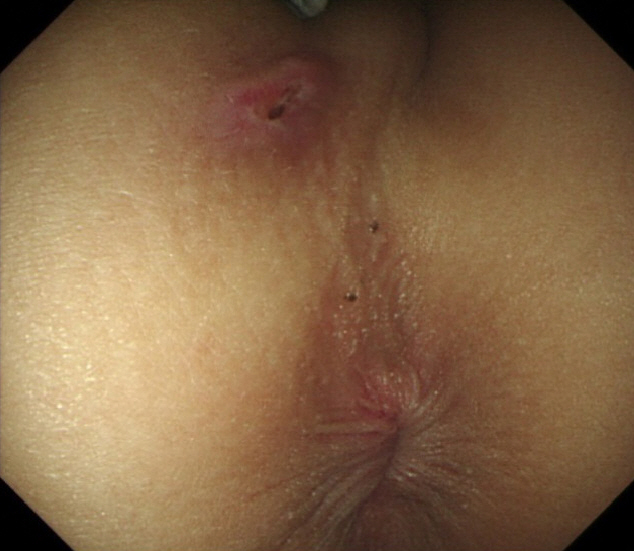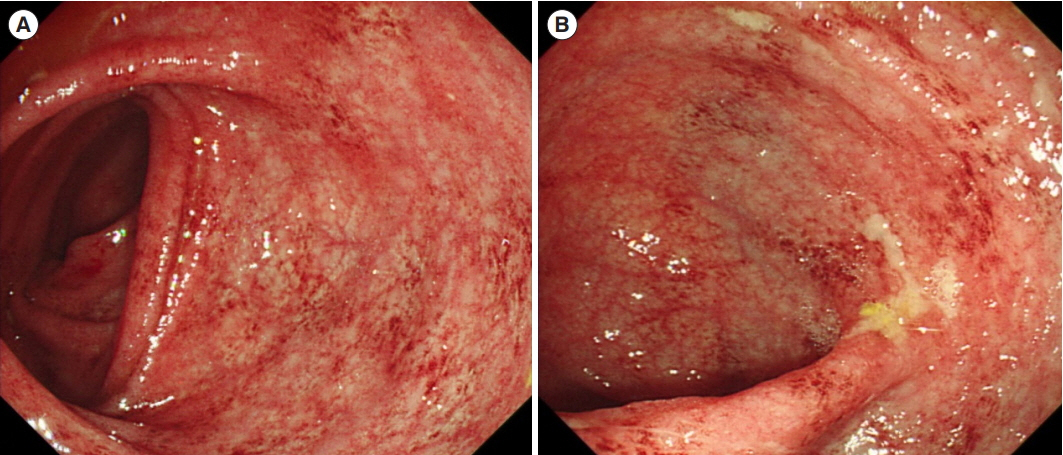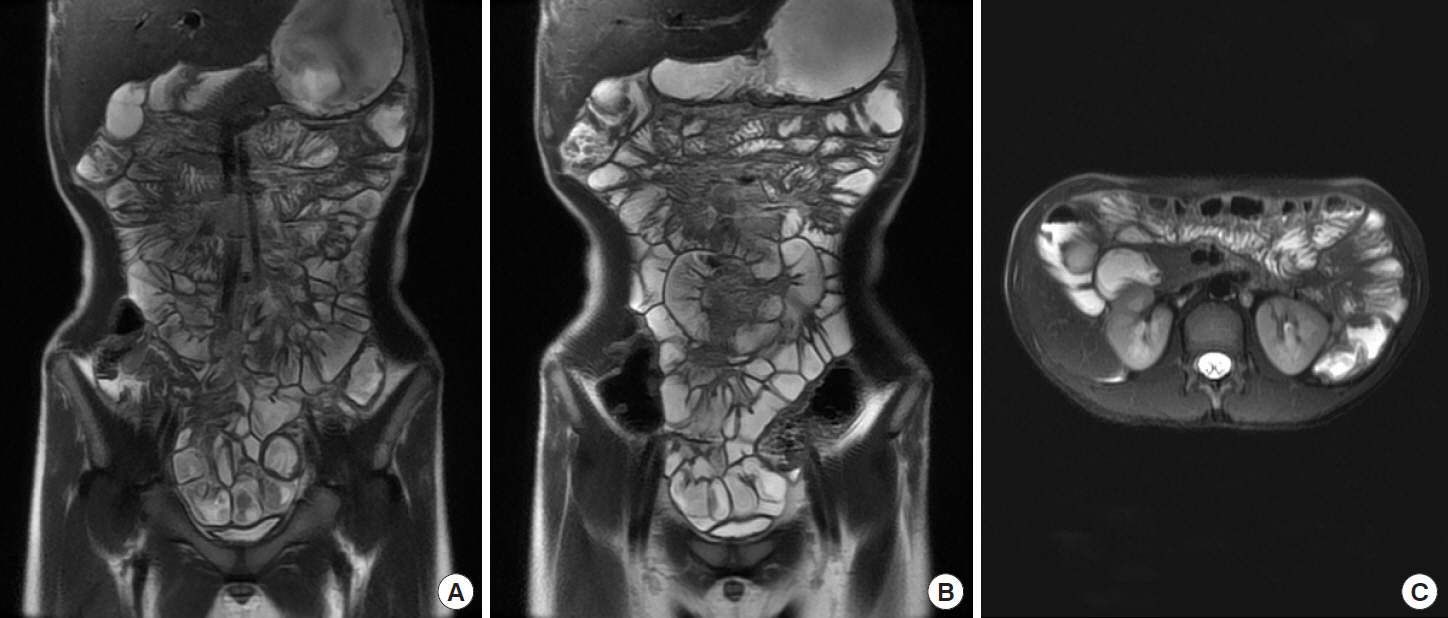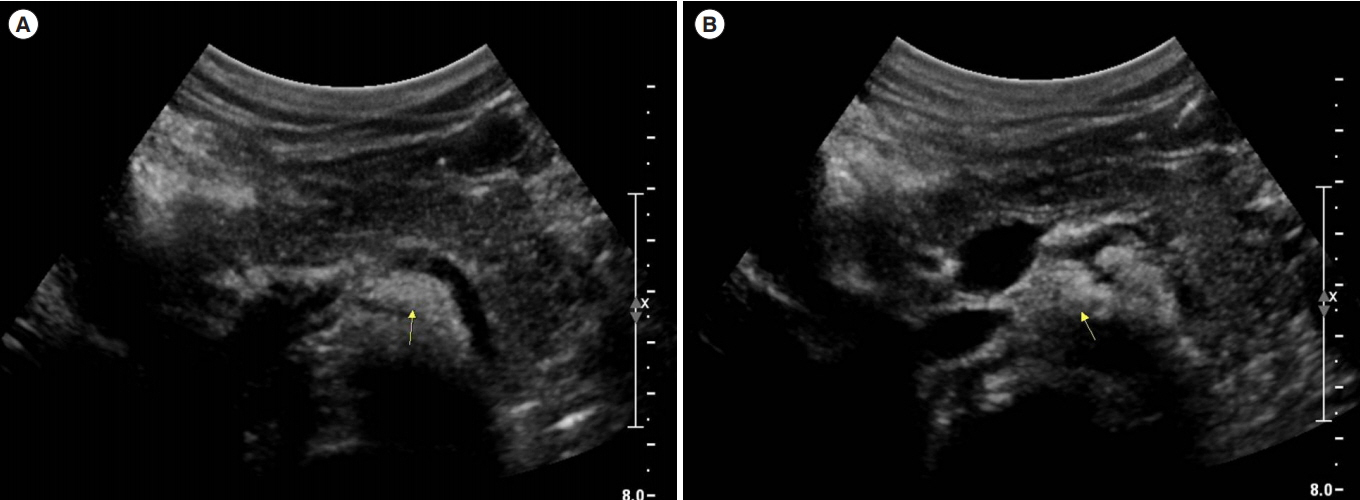Intest Res.
2019 Jan;17(1):144-148. 10.5217/ir.2018.00104.
Acute pancreatitis associated with indigo naturalis in pediatric severe Crohn’s disease
- Affiliations
-
- 1Department of Pediatrics, School of Medicine, Kyungpook National University, Daegu, Korea. bhchoe@knu.ac.kr
- KMID: 2438453
- DOI: http://doi.org/10.5217/ir.2018.00104
Abstract
- The incidence of inflammatory bowel disease (IBD) is rapidly increasing worldwide. Indigo naturalis is known to have an antiinflammatory effect. Indigo naturalis has been traditionally used in the treatment of IBD in China and Japan. Currently, it is used as a primary or adjunctive drug in patients with ulcerative colitis. There are some reports of the effects of indigo naturalis when used in patients with ulcerative colitis. However, its usage has been associated with adverse events, including liver dysfunction, headache, gastrointestinal disturbance, and pulmonary hypertension. Pancreatitis as an adverse event during treatment using indigo naturalis has not yet been reported. We report a case of recurrent events of pancreatitis that occurred briefly after starting medication with indigo naturalis in a child with severe Crohn's disease. The pancreatitis improved after indigo naturalis was discontinued in 2 events. This is the first case to report the association between pancreatitis and indigo naturalis in the English literature.
Keyword
MeSH Terms
Figure
Cited by 1 articles
-
One-year clinical efficacy and safety of indigo naturalis for active ulcerative colitis: a real-world prospective study
Yuichi Matsuno, Takehiro Torisu, Junji Umeno, Hiroki Shibata, Atsushi Hirano, Yuta Fuyuno, Yasuharu Okamoto, Shin Fujioka, Keisuke Kawasaki, Tomohiko Moriyama, Tomohiro Nagasue, Keizo Zeze, Yoichiro Hirakawa, Shinichiro Kawatoko, Yutaka Koga, Yoshinao Oda, Motohiro Esaki, Takanari Kitazono
Intest Res. 2022;20(2):260-268. doi: 10.5217/ir.2021.00124.
Reference
-
1. Hong SJ, Cho SM, Choe BH, et al. Characteristics and incidence trends for pediatric inflammatory bowel disease in Daegu-Kyungpook Province in Korea: a multi-center study. J Korean Med Sci. 2018; 33:e132.
Article2. Lee YA, Chun P, Hwang EH, Mun SW, Lee YJ, Park JH. Clinical features and extraintestinal manifestations of Crohn disease in children. Pediatr Gastroenterol Hepatol Nutr. 2016; 19:236–242.
Article3. Choi J, Kang B, Kim MJ, Sohn I, Lee HJ, Choe YH. Early infliximab yields superior long-term effects on linear growth in pediatric Crohn’s disease patients. Gut Liver. 2018; 12:255–262.
Article4. Ruemmele FM, Veres G, Kolho KL, et al. Consensus guidelines of ECCO/ESPGHAN on the medical management of pediatric Crohn’s disease. J Crohns Colitis. 2014; 8:1179–1207.5. Kang B, Choe YH. Early biologic treatment in pediatric Crohn’s disease: catching the therapeutic window of opportunity in early disease by treat-to-target. Pediatr Gastroenterol Hepatol Nutr. 2018; 21:1–11.
Article6. Kang B, Choi SY, Kim HS, Kim K, Lee YM, Choe YH. Mucosal healing in paediatric patients with moderate-to-severe luminal Crohn’s disease under combined immunosuppression: escalation versus early treatment. J Crohns Colitis. 2016; 10:1279–1286.
Article7. Naganuma M, Sugimoto S, Mitsuyama K, et al. Efficacy of indigo naturalis in a multicenter randomized controlled trial of patients with ulcerative colitis. Gastroenterology. 2018; 154:935–947.8. Ye BD. Introducing traditional herbal medicine into conventional health care in treating ulcerative colitis: primum non nocere. Gastroenterology. 2018; 154:792–795.
Article9. Chang HN, Pang JH, Yang SH, et al. Inhibitory effect of indigo naturalis on tumor necrosis factor-alpha-induced vascular cell adhesion molecule-1 expression in human umbilical vein endothelial cells. Molecules. 2010; 15:6423–6435.
Article10. Fukunaga K, Hida N, Ohnishi K, et al. A suppository Chinese medicine (xilei-san) for refractory ulcerative proctitis: a pilot clinical trial. Digestion. 2007; 75:146–147.
Article11. Stasiak N, Kukuła-Koch W, Głowniak K. Modern industrial and pharmacological applications of indigo dye and its derivatives: a review. Acta Pol Pharm. 2014; 71:215–221.12. Sugimoto S, Naganuma M, Kanai T. Indole compounds may be promising medicines for ulcerative colitis. J Gastroenterol. 2016; 51:853–861.
Article13. Suzuki H, Kaneko T, Mizokami Y, et al. Therapeutic efficacy of the Qing Dai in patients with intractable ulcerative colitis. World J Gastroenterol. 2013; 19:2718–2722.
Article14. Zhang F, Li Y, Xu F, Chu Y, Zhao W. Comparison of Xilei-san, a Chinese herbal medicine, and dexamethasone in mild/moderate ulcerative proctitis: a double-blind randomized clinical trial. J Altern Complement Med. 2013; 19:838–842.
Article15. Ng SC, Lam YT, Tsoi KK, Chan FK, Sung JJ, Wu JC. Systematic review: the efficacy of herbal therapy in inflammatory bowel disease. Aliment Pharmacol Ther. 2013; 38:854–863.
Article16. Yuan G, Ke Q, Su X, Yang J, Xu X. Qing Dai, a traditional Chinese medicine for the treatment of chronic hemorrhagic radiation proctitis. Chin Ger J Clin Oncol. 2009; 8:114.
Article17. Sugimoto S, Naganuma M, Kiyohara H, et al. Clinical efficacy and safety of oral Qing-Dai in patients with ulcerative colitis: a single-center open-label prospective study. Digestion. 2016; 93:193–201.
Article18. Nishio M, Hirooka K, Doi Y. Chinese herbal drug natural indigo may cause pulmonary artery hypertension. Eur Heart J. 2016; 37:1992.
Article19. Moolsintong P, Loftus EV Jr, Chari ST, Egan LJ, Tremaine WJ, Sandborn WJ. Acute pancreatitis in patients with Crohn’s disease: clinical features and outcomes. Inflamm Bowel Dis. 2005; 11:1080–1084.
Article20. Gallego-Gutiérrez S, Navas-López VM, Kolorz M, et al. Successful mercaptopurine usage despite azathioprine-induced pancreatitis in paediatric Crohn’s disease. J Crohns Colitis. 2015; 9:676–679.
Article
- Full Text Links
- Actions
-
Cited
- CITED
-
- Close
- Share
- Similar articles
-
- Current new challenges in the management of ulcerative colitis
- One-year clinical efficacy and safety of indigo naturalis for active ulcerative colitis: a real-world prospective study
- Hypotension in patients administered indigo carmine containing impurities: A case report
- Medical Management of Acute Pancreatitis and Complications
- Assessment of Severity and Fluid Administration in Acute Pancreatitis





